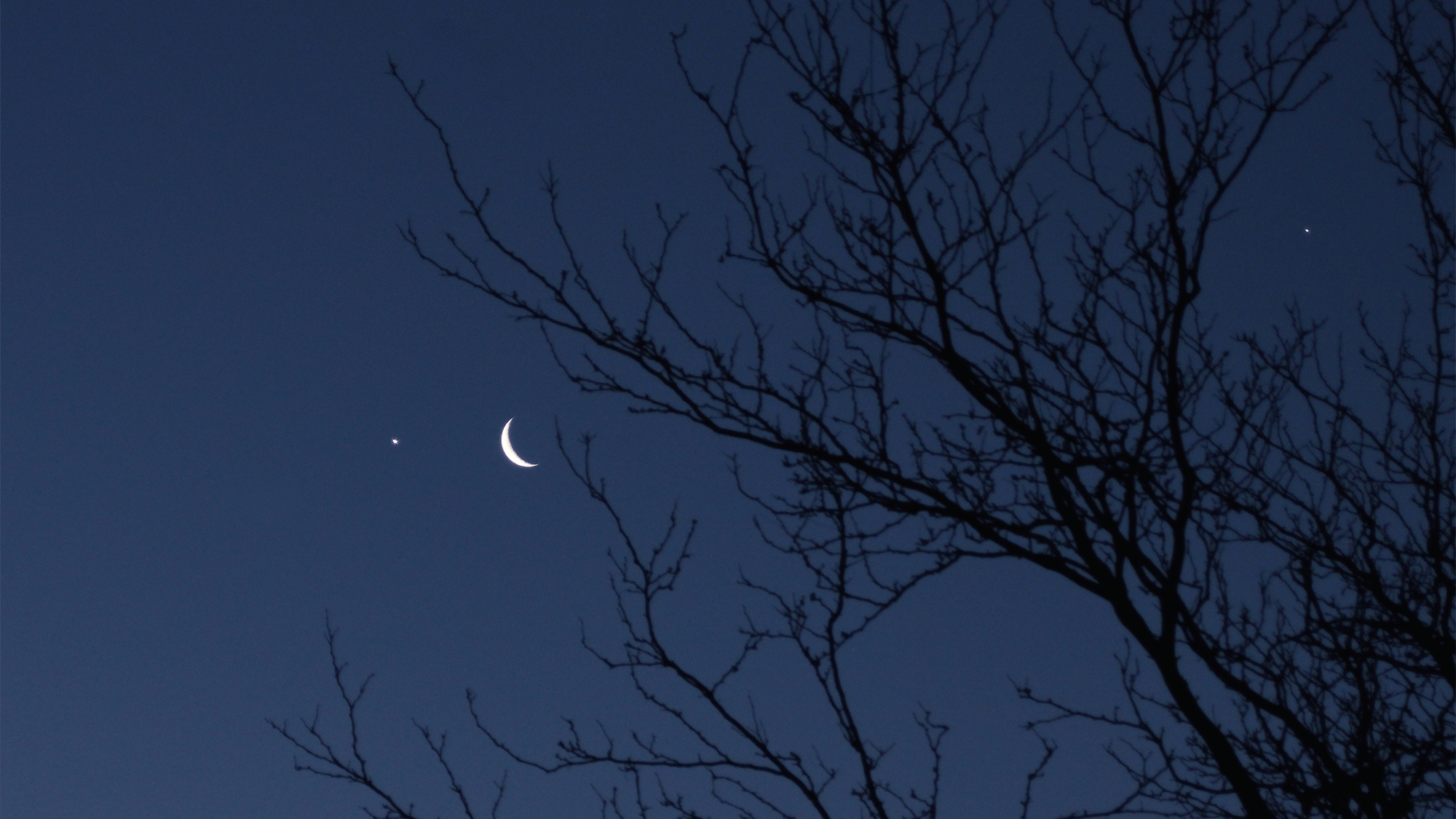

We may earn revenue from the products available on this page and participate in affiliate programs. Learn more ›
| March 1 and 2, 2023 | Venus meets Jupiter |
| March 6 and 7, 2023 | Full worm moon |
| March 20, 2023 | Vernal equinox aka the first day of spring |
Weather folklore says that in the Northern Hemisphere, March goes “in like a lion, out like a lamb.” Usually, we can expect fierce wintery weather to kick off the third month of the year and calm springlike weather to end it. While it is tough to predict exactly what kind of weather that the transitional and temperamental month of March brings, there are some cosmic events to keep your eye on as the days get a little bit longer. If you happen to get any stellar sky photos, tag us and include #PopSkyGazers.
[Related: Balloon bots might help uncover Venus’ hazy secrets.]
March 1 and 2 – Venus meets Jupiter
The night sky’s two brightest planets will slide past one another and on the dome of the sky. In North America, Venus and Jupiter’s closest pairing should occur shortly after sunset on Wednesday March 1, where they’ll pass approximately a full moon’s width (half a degree) apart. Throughout the rest of this month, Jupiter will drop in the western sky and will hide near the sun for a bit, and emerge later in the spring as a morning planet. Venus will remain in the western sky for the rest of the spring into the middle of summer.
March 6 and 7 – Full worm moon
March’s full moon will reach peak illumination at 7:42 AM EST on Tuesday, March 7. Beginning on March 6, the bright moon will begin to rise above the horizon. According to the Farmers Almanac, this year’s worm moon will look especially large to us when it’s near the horizon due to the “Moon illusion.” This is when the moon appears bigger near comparative celestial objects than it does when it’s higher in the sky without any other references.
The name worm moon has a few different origins. It originally was believed to refer to when earthworms appear as the soil warms during the spring, inviting birds to feed. However, new research from the Farmer’s Almanac found that during the 1760s, Captain Jonathan Carver, a colonial explorer from Massachusetts, visited the Naudowessie (Dakota) and other Native American tribes and wrote “Worm Moon” refers to beetle larvae which start to emerge from the thawing bark of trees and places they hide out during the winter.
March’s full moon is also called the Crow Moon or Aandego-giizis and the Sugar Marking Moon or Ziinsibaakwadooke-giizis in Anishinaabemowin (Ojibwe), The Day is Cut in Two Moon or Tewehnislya’ks in Oneida, and the Spring Moon or Upinagasraq in Inupiaq.
[Related: Landing on the moon only made us love it more.]
March 20 – Vernal equinox
The March or Vernal equinox marks the first day of spring in the Northern Hemisphere. The equinox will arrive on March 20 at 5:24 pm EST.
The equinox brings seasonal effects all over the globe and occurs twice a year (once in the spring and once in the fall). The March equinox brings earlier sunrises, later sunsets and sprouting plants to the Northern Hemisphere and the opposite effects to the Southern Hemisphere.
At the equinox, both hemispheres are equally receiving the sun’s rays. The word actually comes from the Latin aequus (equal) and nox (night), since night and day were believed to be the same amount of time since Greek astronomer Hipparchus discovered the equinoxes. However, as timekeeping has gotten more precise, we know that they are not equal during the equinox. The fastest sunsets and sunrises—the length of time it takes for the whole sun to fall below the horizon—occur during both equinoxes.
The same skygazing rules that apply to pretty much all space-watching activities are key this month: Go to a dark spot away from the lights of a city or town and let the eyes adjust to the darkness for about a half an hour.
